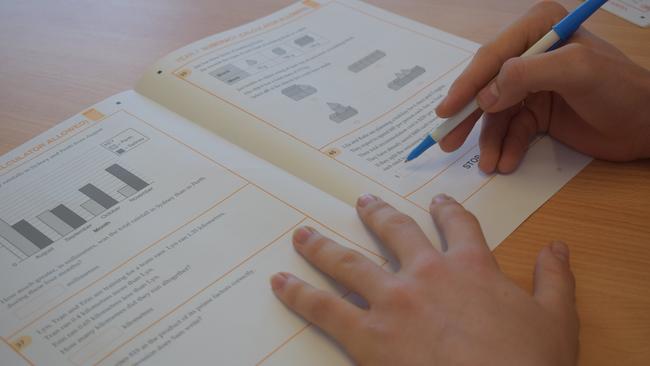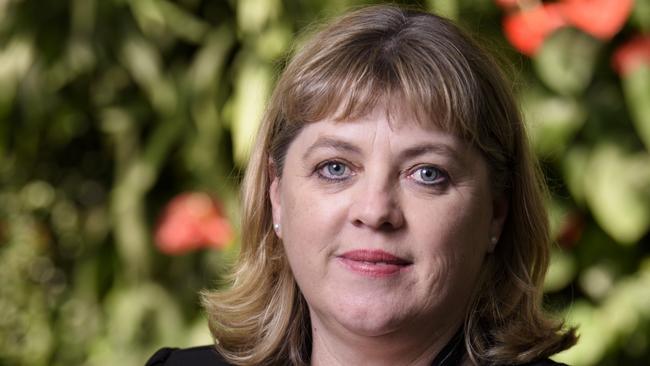NAPLAN 2023: Data shows Tasmanian students lagging behind interstate counterparts
Education Minister Roger Jaensch has defended the state’s NAPLAN results, saying Tasmanian schools are “doing as well, if not better” than those in other parts of regional Australia.

Tasmania
Don't miss out on the headlines from Tasmania. Followed categories will be added to My News.
Education Minister Roger Jaensch has defended the state’s NAPLAN results, saying Tasmanian schools are “doing as well, if not better than” those in other parts of regional Australia.
Released on Wednesday, the 2023 National Assessment Program - Literacy and Numeracy (NAPLAN) results showed that Tasmanian students continued to lag behind their mainland counterparts in terms of proficiency in literacy and numeracy.
NAPLAN has been overhauled this year, with testing being held in March instead of May and the introduction of four new levels of proficiency: ‘Exceeding’, ‘Strong’, ‘Developing’, and ‘Needs additional support’.
Tasmanian students produced worse results than those in all other states and territories - except the Northern Territory - in 18 of the 20 total testing categories.
The state’s students were below the national average in every category.

One in seven Tasmanian kids were identified as needing additional assistance to meet expectations.
But Mr Jaensch said the data also showed that 57 per cent of students were classified as ‘Strong’ or ‘Exceeding’.
“We’ve got about 30 per cent who are on track to be meeting those targets if they keep going the way they are and 10-13 per cent or so who need some additional support,” he said.
“That helps us to focus our efforts and it backs up what we have been doing to give those students more support in their school, particularly around literacy.”
Mr Jaensch said the government’s plan to introduce the teaching of phonics from Prep to Year 2 in all primary schools by 2026 - and conduct a Year 1 phonics check in Term 3 - would help to improve educational outcomes across the state.
Professor Iris Duhn, an early education expert at the University of Tasmania, said while NAPLAN results should not be “ignored”, it was important not to “jump to immediate conclusions about the quality of the state’s education system”.
“While NAPLAN provides insights into expectations regarding our students’ achievements, these expectations are based on specific notions of what students should be able to do across Australia,” she said.

“Tasmania as a state has distinct demographics, a distinct history, and a distinct location. All of this shapes Tasmania’s cultural, social and economic identity. NAPLAN cannot account for context and a simplified understanding of results creates the scenario where a school in Bicheno will be compared to a school in inner Sydney.”
Labor education spokesman Josh Willie said the latest data was “completely alarming”.
“If you look … across all of the categories, more than 40 per cent of Tasmanian students are not meeting literacy and numeracy expectations on average, which is a huge concern,” he said.
“And it has an impact on not only young people but also the Tasmanian economy and our social outcomes.”
Tasmanian Council of Social Service CEO Adrienne Picone said the government needed to expand early childhood education offerings and invest more into community-run programs to support Aboriginal families and children.
“We know where we need to see improvement with regard to educational outcomes - it now needs to be backed up by action,” she said.
How Tassie students performed in 2023 NAPLAN testing
Tasmanian primary and secondary students continue to lag behind their interstate counterparts in literacy and numeracy, falling short of the national average in all key measurements.
The 2023 National Assessment Program – Literacy and Numeracy (NAPLAN) results, released on Wednesday, show there is still significant room for improvement in Tasmania’s education system.
Critics of NAPLAN say it pits schools against each other and offers too limited a picture of students’ abilities. The program has this year been overhauled, with testing held in March instead of May for the first time and four new levels of proficiency introduced: ‘Exceeding’, ‘Strong’, ‘Developing’, and ‘Needs additional support’.
The Australian Curriculum, Assessment and Reporting Authority (ACARA), which administers NAPLAN, says the new reporting system provides for a clearer and simpler representation of students’ achievement.
ACARA CEO David de Carvalho said the new reporting showed “those areas where we need to focus our efforts on supporting more students to meet expectations and succeed”.

“The results also continue to highlight the educational disparities of students from non-urban areas, indigenous Australian heritage and those with low socio-educational backgrounds,” he said.
NAPLAN measures the proficiency of students in years 3, 5, 7 and 9. The 2023 test results show that Tasmanian girls outperformed boys in all four literacy metrics: reading, writing, spelling, and grammar and punctuation. Boys, however, outperformed girls in numeracy.
Tasmania’s results were worse than all other states and territories – except the Northern Territory – in every testing domain.
The performance of students tended to be worse the further away they were from urban centres and indigenous students’ proficiency was typically lesser than non-indigenous students’.
Of the 6379 Tasmanian Year 3 students tested for writing, 5.4 per cent were ‘Exceeding’, 62.8 per cent were ‘Strong’, 19.3 per cent were ‘Developing’, and 10 per cent were classified as ‘Needs additional support’.
A greater percentage of Year 9s were considered to be ‘Exceeding’ at writing (13.9 per cent), with 18.7 per cent of girls falling under that category, compared to 9.2 per cent of boys.

When it came to spelling, 13.8 per cent of Year 5s in Tasmania were ‘Exceeding’ and 45.3 per cent were ‘Strong’, while 25.6 per cent were ‘Developing’ and 12.9 per cent were deemed ‘Needs additional support’.
52.3 per cent of indigenous Year 5 students were found to be either ‘Developing’ or ‘Needs additional support’ in terms of spelling proficiency.
Of the 6461 Tasmanian male Year 7 students assessed for numeracy, 8 per cent were categorised as ‘Exceeding’, compared to 4.6 per cent of female students. However, a slightly greater proportion of male Year 7s (14.4 per cent) needed additional support in numeracy, as opposed to 14.1 per cent of girls.
Australian Education Union federal president Correna Haythorpe said NAPLAN’s “importance should not be overrated” but added that “the overall pattern of these results add to the evidence about the unacceptable achievement gaps between students from different backgrounds and locations and the need for full funding of public schools”.





